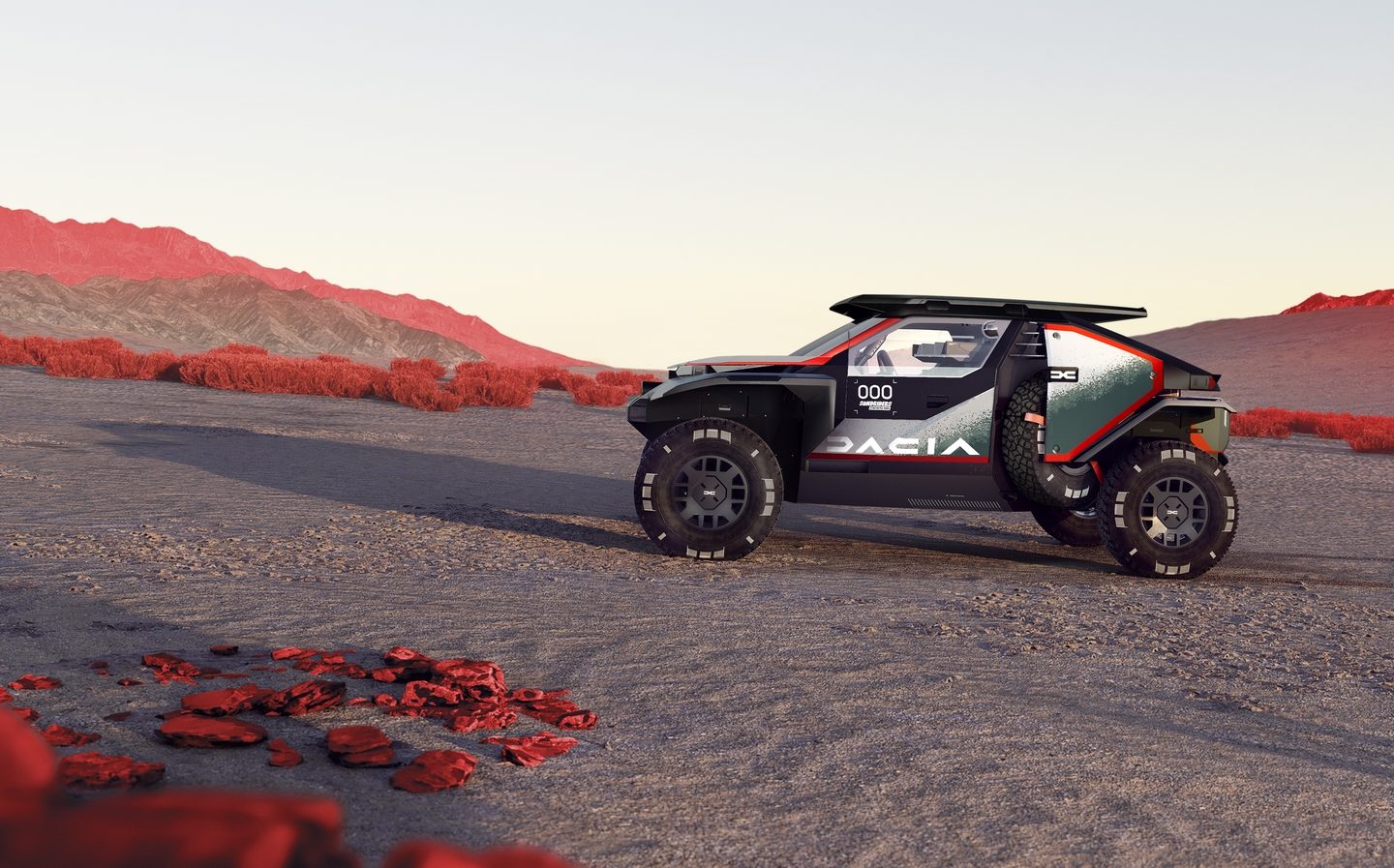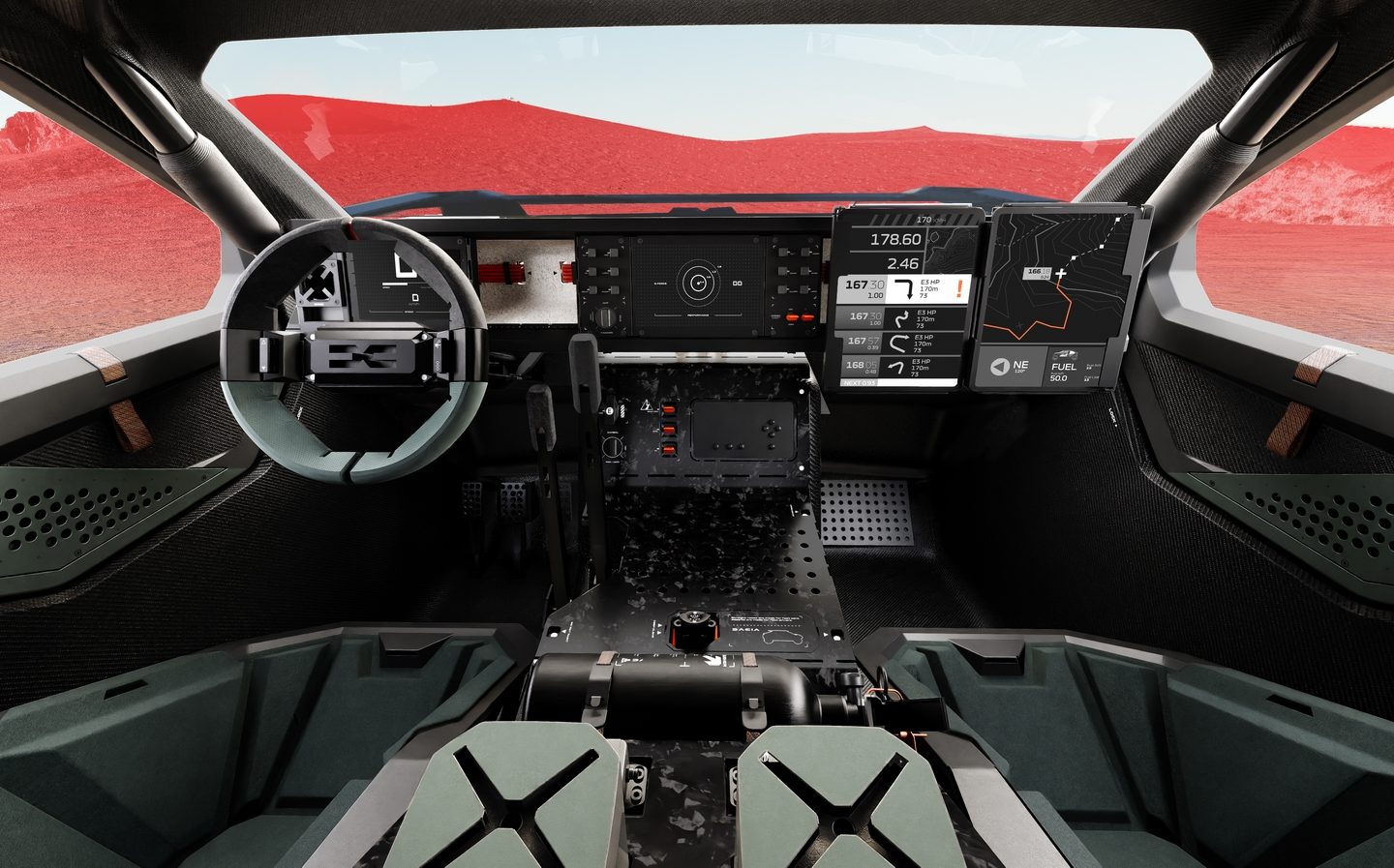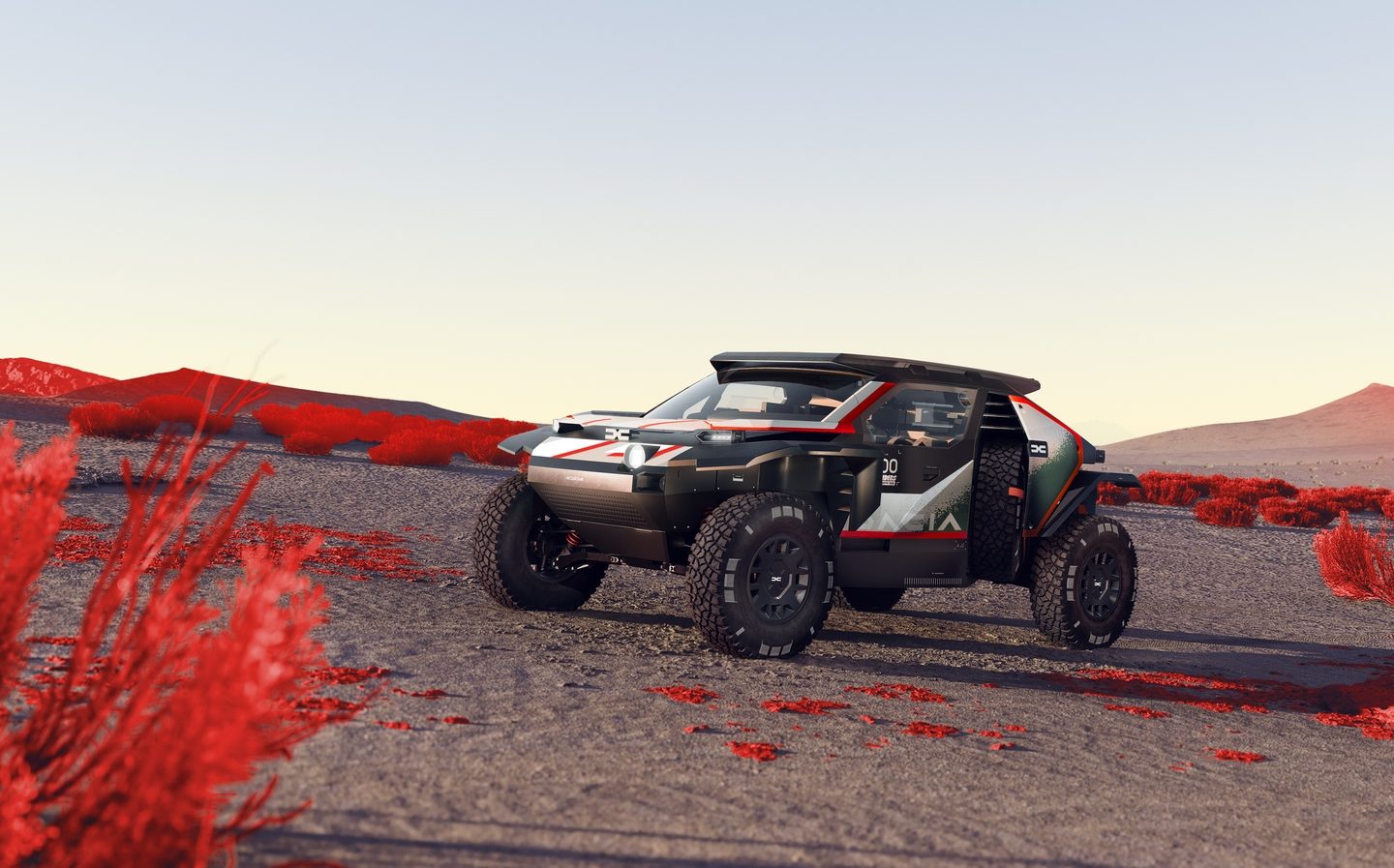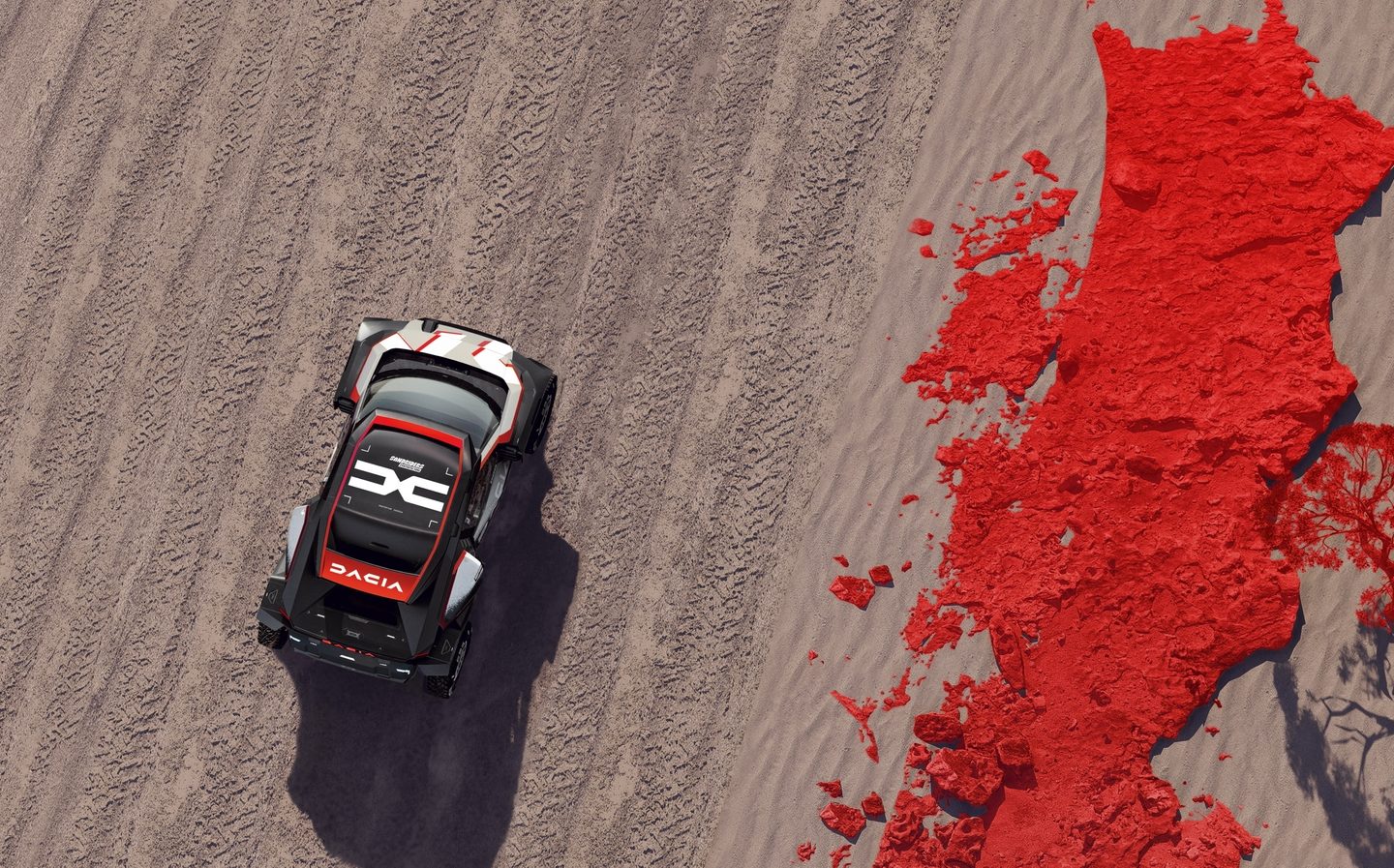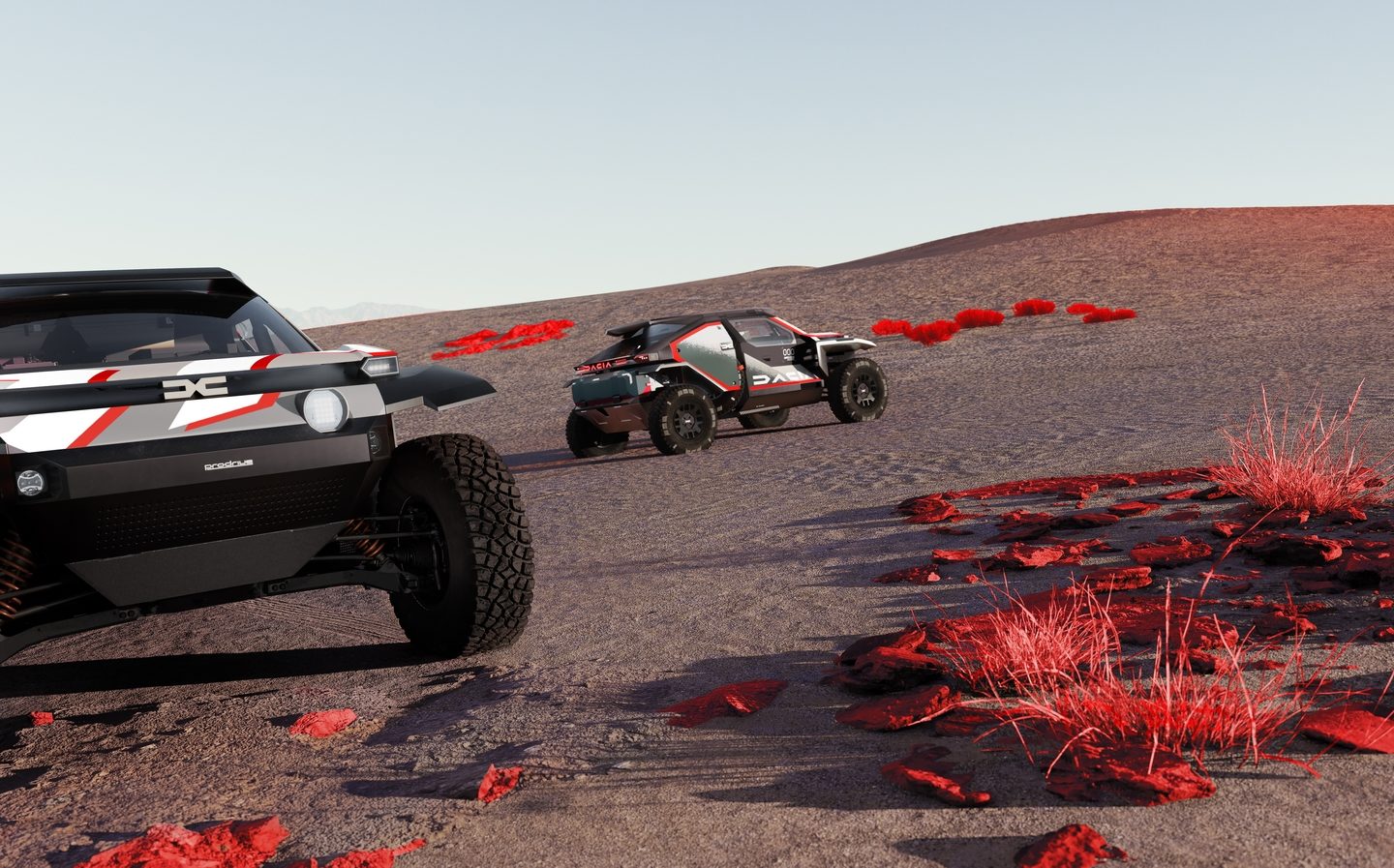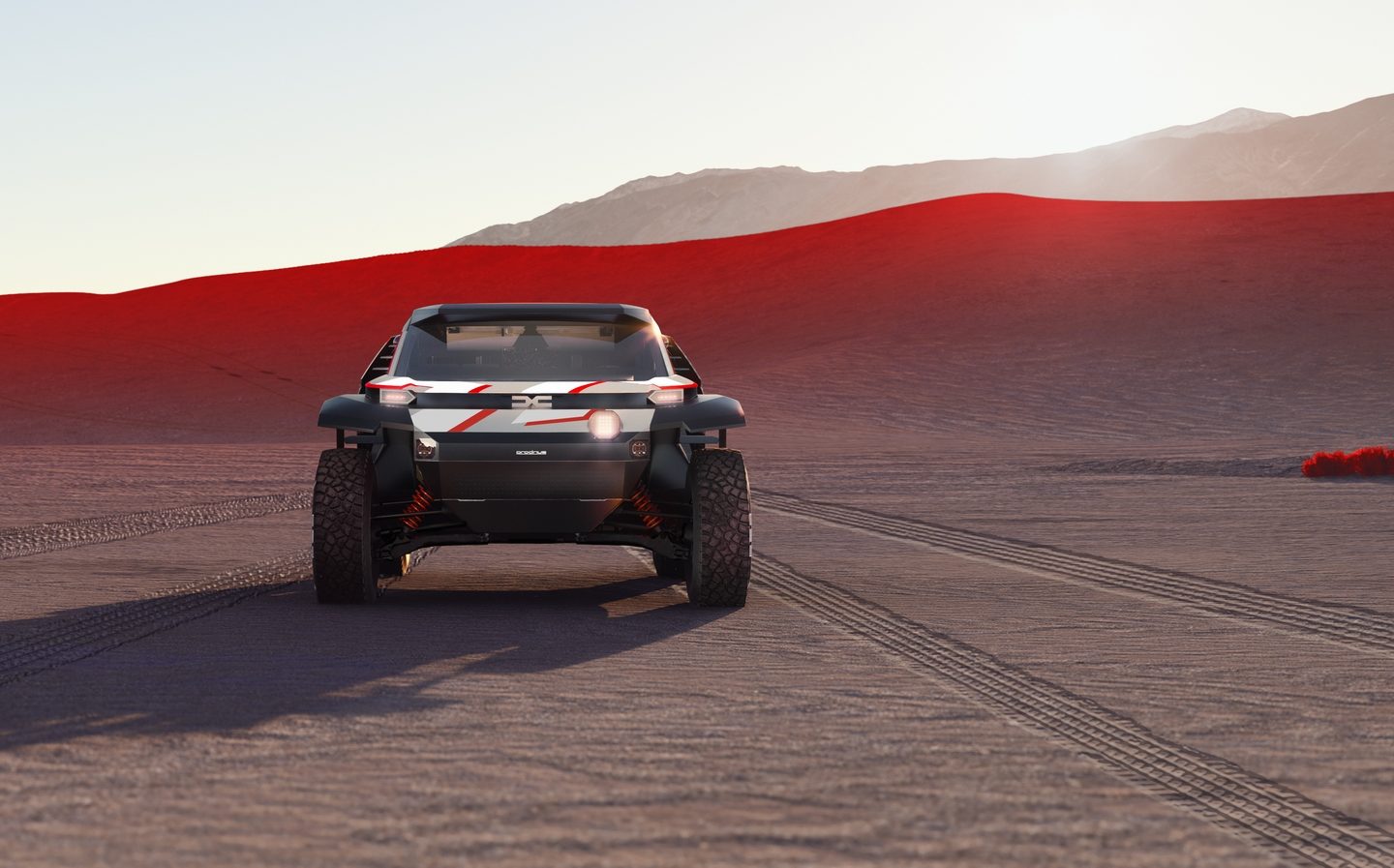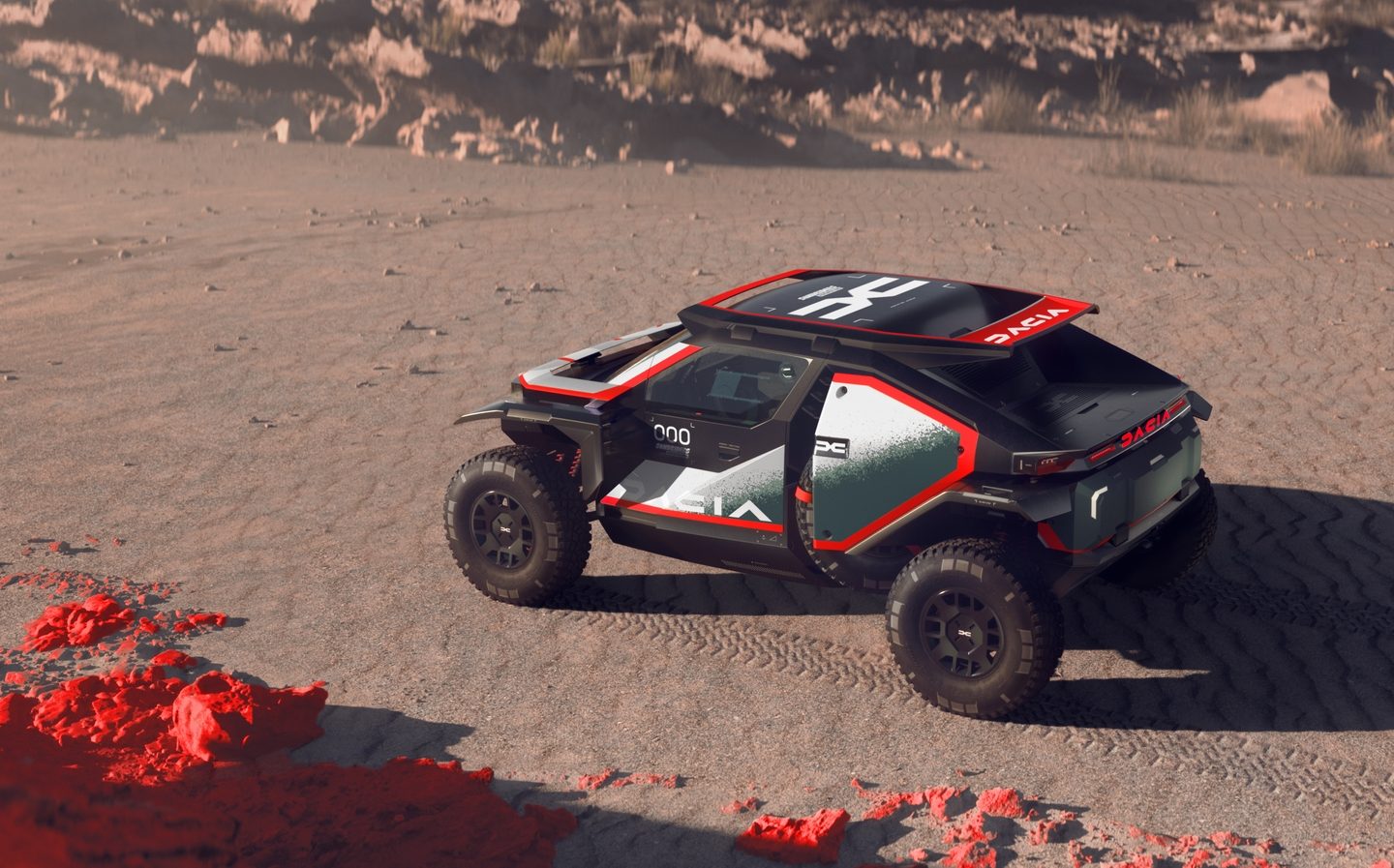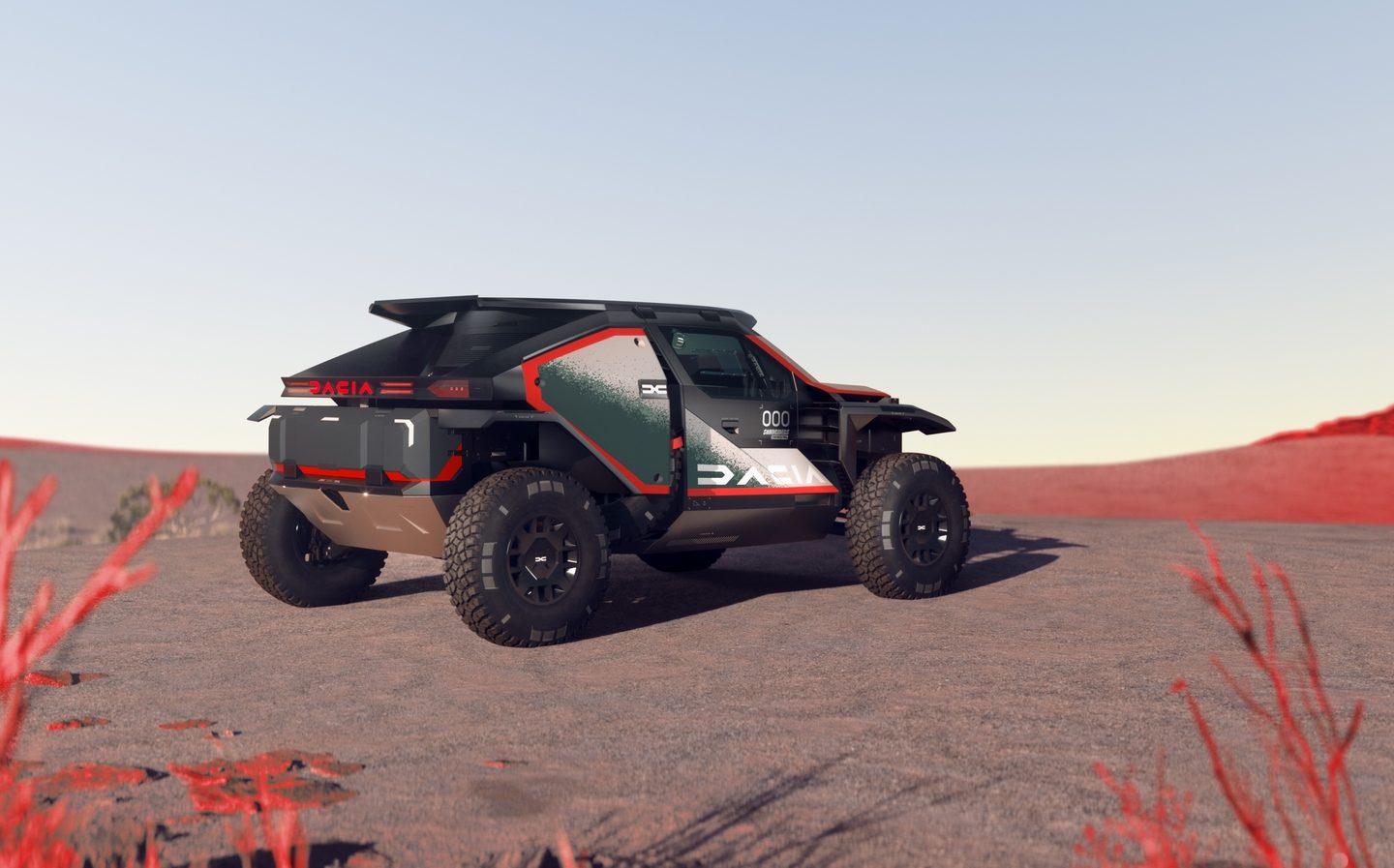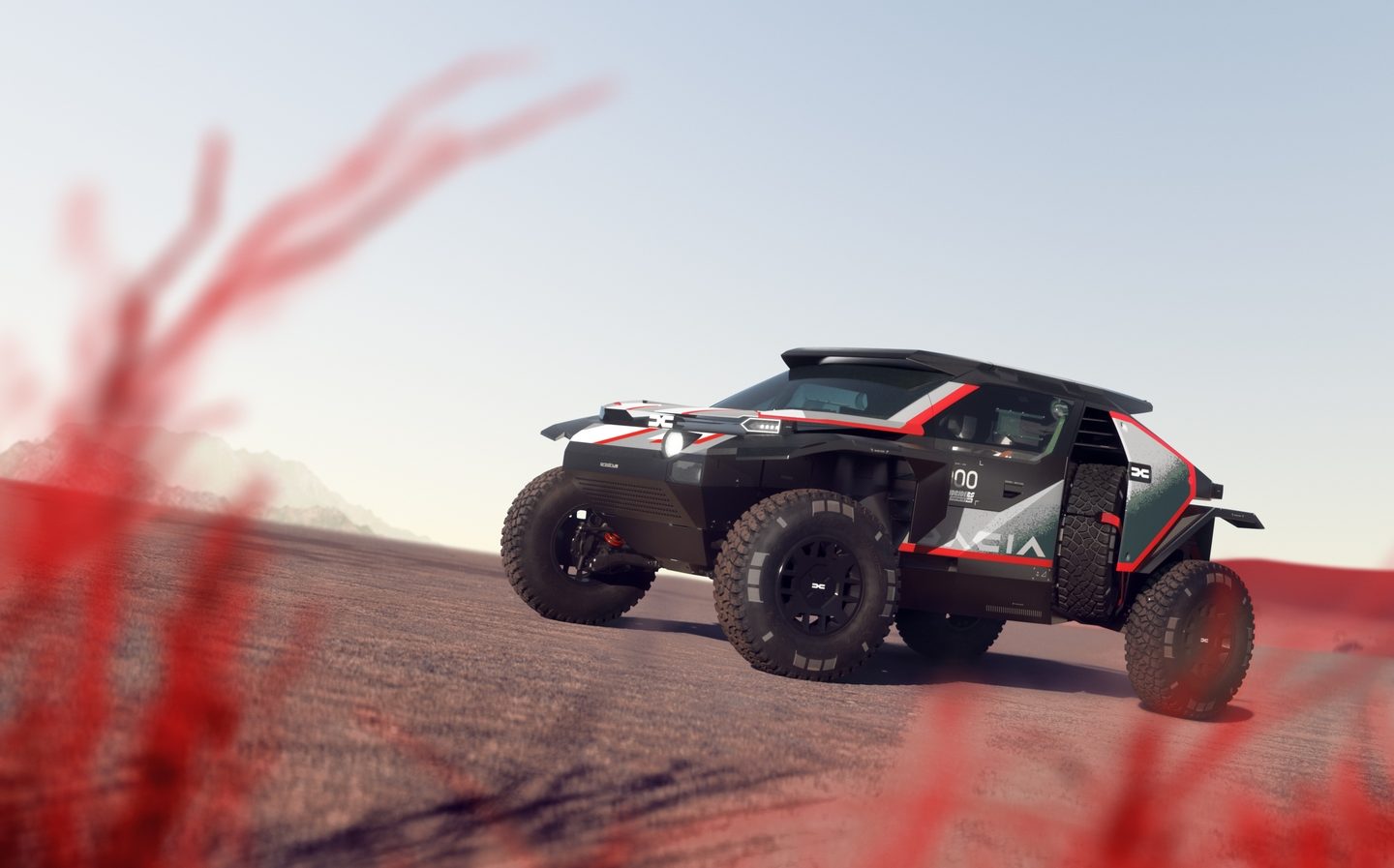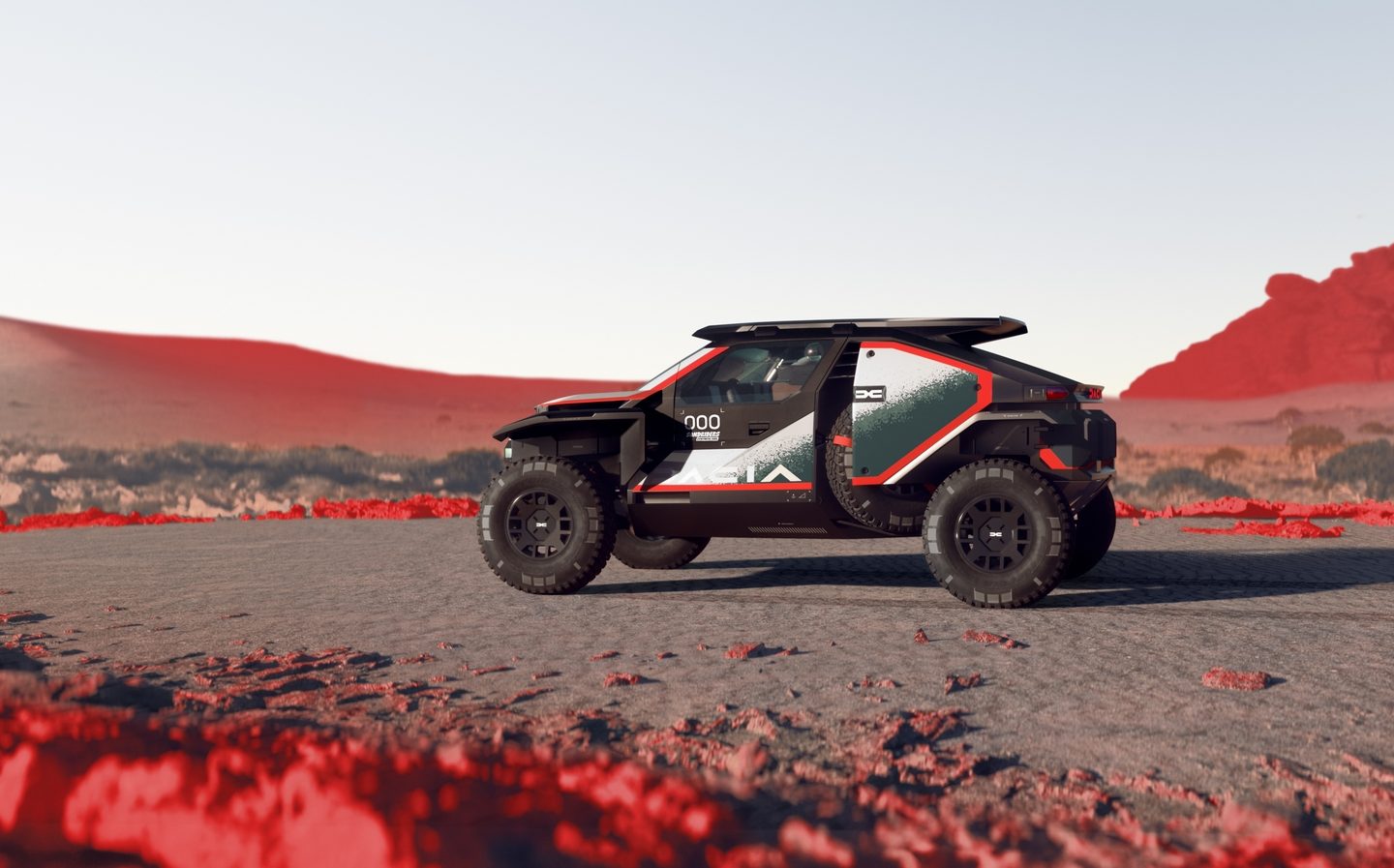Loeb's Dacia Sandrider for 2025 Dakar Rally looks like a 4x4 competition concept made reality
Paris show star was a Manifesto for… going rallying
At the 2022 Paris motor show, Dacia showed off an interesting concept car called the Manifesto. Now it seems that far from being a road car idea that’ll never make production, the Romanian company has turned it into the full competition-spec Sandrider, a vehicle tough enough to take on the 2025 Dakar Rally.
Announcing its entry into one of the toughest motorsport events on the world stage, Dacia has also confirmed it will used the Sandrider for a full season in the World Rally-Raid Championship (W2RC) next year, with the vehicle using only synthetically-made fuel from Aramco as part of Dacia’s corporate commitment to environmental practices.
It’s not messing about with driver teams, either, as three Sandriders will compete in the 2025 W2RC, including the Dakar. It has confirmed as its pilots the nine-times World Rally Championship (WRC) legend Sébastien Loeb, Spanish ace Cristina Gutierrez Herrero — who has competed at Dakar eight times already in her career — and Qatar’s Nasser Al-Attiyah, who has won the W2RC title twice previously and the Dakar Rally an amazing five times.
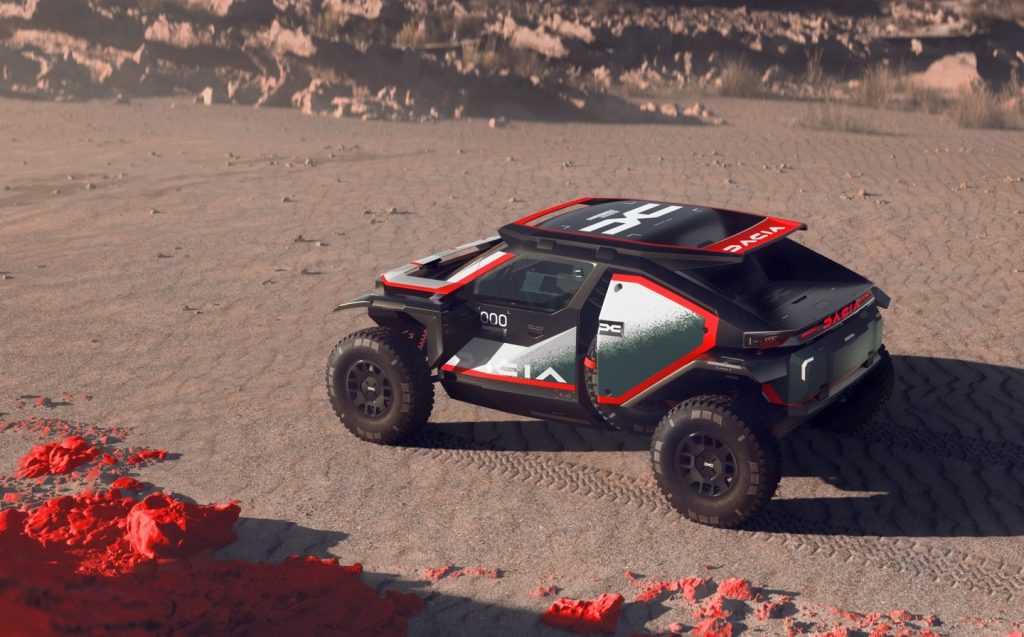
Carbon body is light and cuts out heat
Everything about the Sandrider is about keeping weight down and minimising the car’s impact on its surroundings.
The chassis is a tubular spaceframe, which makes the Dacia strong and around 15kg lighter than comparable prototype competition vehicles according to its maker.
All its bodywork panels are made from carbon fibre, incorporating clever anti-infrared pigments to help keep the cabin temperature down in the searing heat that the Sandrider will be competing in on many events.
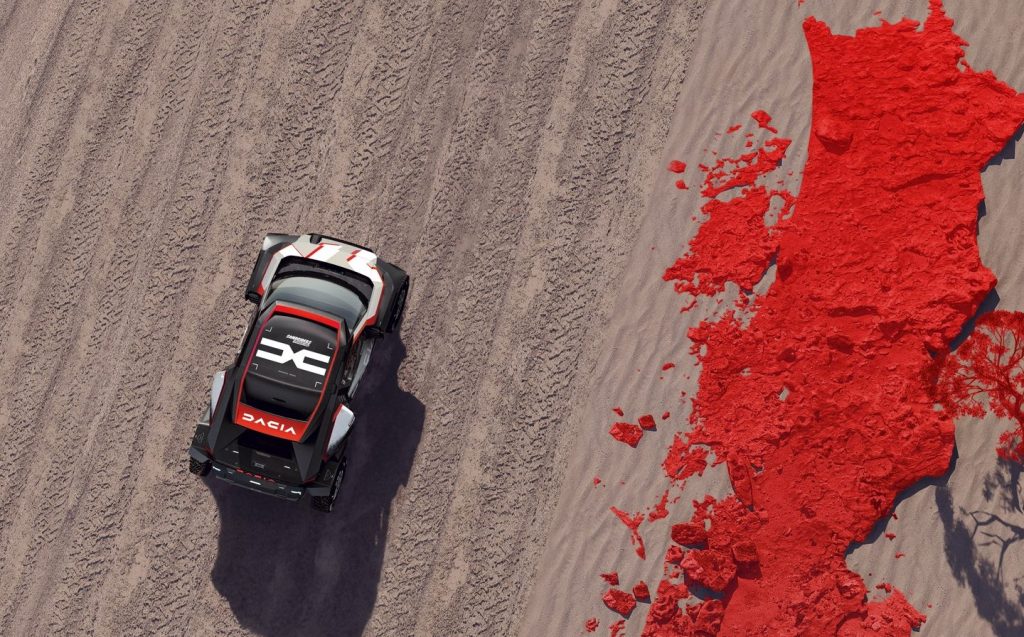
Dacia says it also minimised the number of body panels fitted by only bolting on essential items, while no decorative sections have been added at all — all in the name of weight-saving.
The company is still claiming this is a suitably aerodynamic machine, though, with less drag and lift than some similar competitors.
Packs a 355bhp punch
Designed to run in the top-grade Ultimate T1+ category of the W2RC and Dakar, UK outfit Prodrive —synonymous with preparing Subaru Imprezas for the WRC in the past and which now builds in-house-designed Hunter models for customer Dakar teams — has been tasked with developing the Dacia Sandrider to cope with the rigours of one of the toughest motorsport events available.
It will be powered by a 3-litre twin-turbo V6 petrol engine, developing 355bhp and 398lb ft of torque, which is sent to all four wheels via a six-speed sequential gearbox.
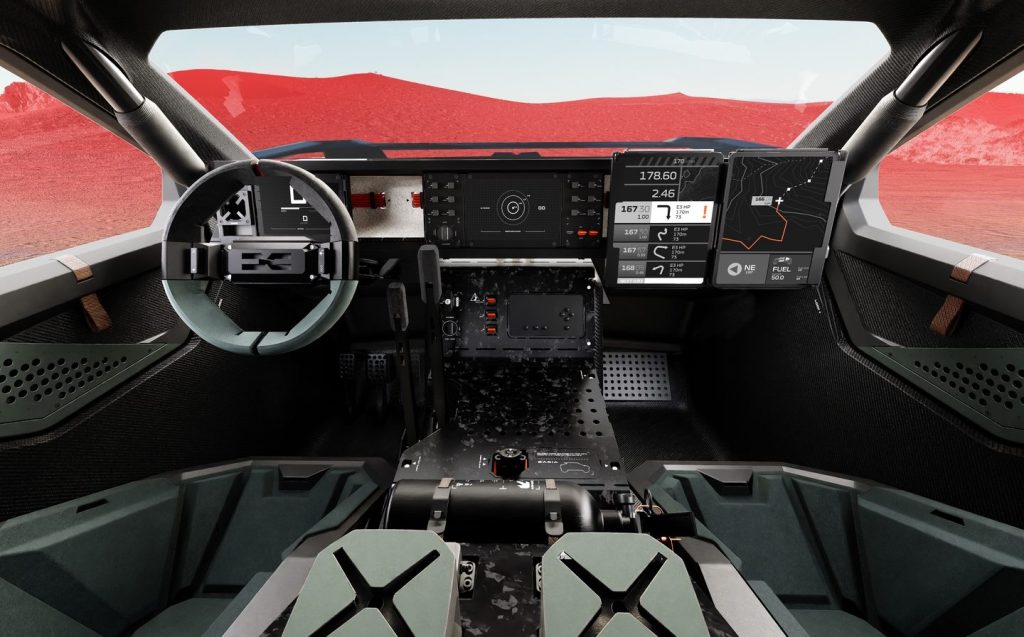
The Sandrider will also have long-travel suspension, offering up to 350mm of movement, with advanced double wishbones all round, while tyres are 37in BF Goodrich items on 17in alloys. The rubber is designed to withstand punctures and offer plenty of grip on low-adhesion terrain.
Catch it in Morocco in October
Other clever features of the Dacia Sandrider include the top of the dashboard being painted in anti-reflective paint, something you’d find in an airplane, as well as humidity-regulating Sabelt seats, exposed spare wheels for easy access, and a magnetic plate on the body to hold the fixing bolts in place if the crews have to change a wheel.
Short overhangs front and rear, and a stubby, raked bonnet which gives the occupants better visibility, should make the Sandrider a formidable W2RC and Dakar entrant.
The Dacia Sandrider will now undergo an extensive period of development testing in several locations around the world, before making its competitive debut in October this year at the Rallye du Maroc 2024 — the Moroccan round of the W2RC.
Related articles
- If you were interested in the Dacia Dakar racer, you may like to check out the Dacia Manifesto concept, a stripped-back off-road buggy showcasing sustainability ideas
- Have you seen the new Dacia Duster?
- A decade of Dacia in the UK: The past and future of plucky budget brand as it marks 240,000 sales
Latest articles
- Seven great automotive events to visit this summer, from F1 to art and champagne
- Watch new Porsche 911 GT3 smash Nürburgring record for manual cars
- Skoda Elroq 2025 review: Czech carmaker can’t seem to miss with its electric family cars
- Five best electric cars to buy in 2025
- Should I buy a diesel car in 2025?
- F1 2025 calendar and race reports: The new Formula One season as it happens
- Zeekr 7X AWD 2025 review: A fast, spacious and high tech premium SUV — but someone call the chassis chief
- Denza Z9GT 2025 review: Flawed but sleek 1,062bhp shooting brake from BYD’s luxury arm
- Extended test: 2024 Renault Scenic E-Tech review


